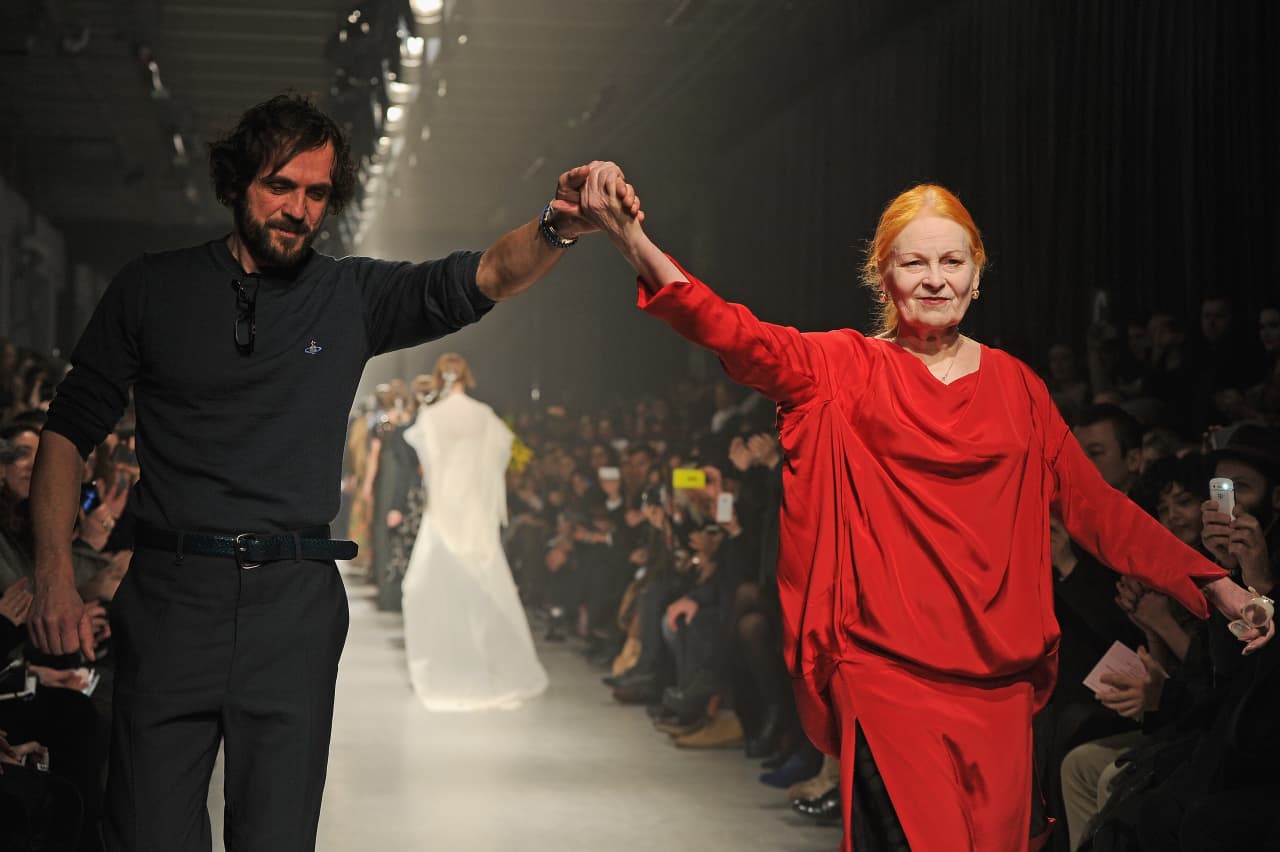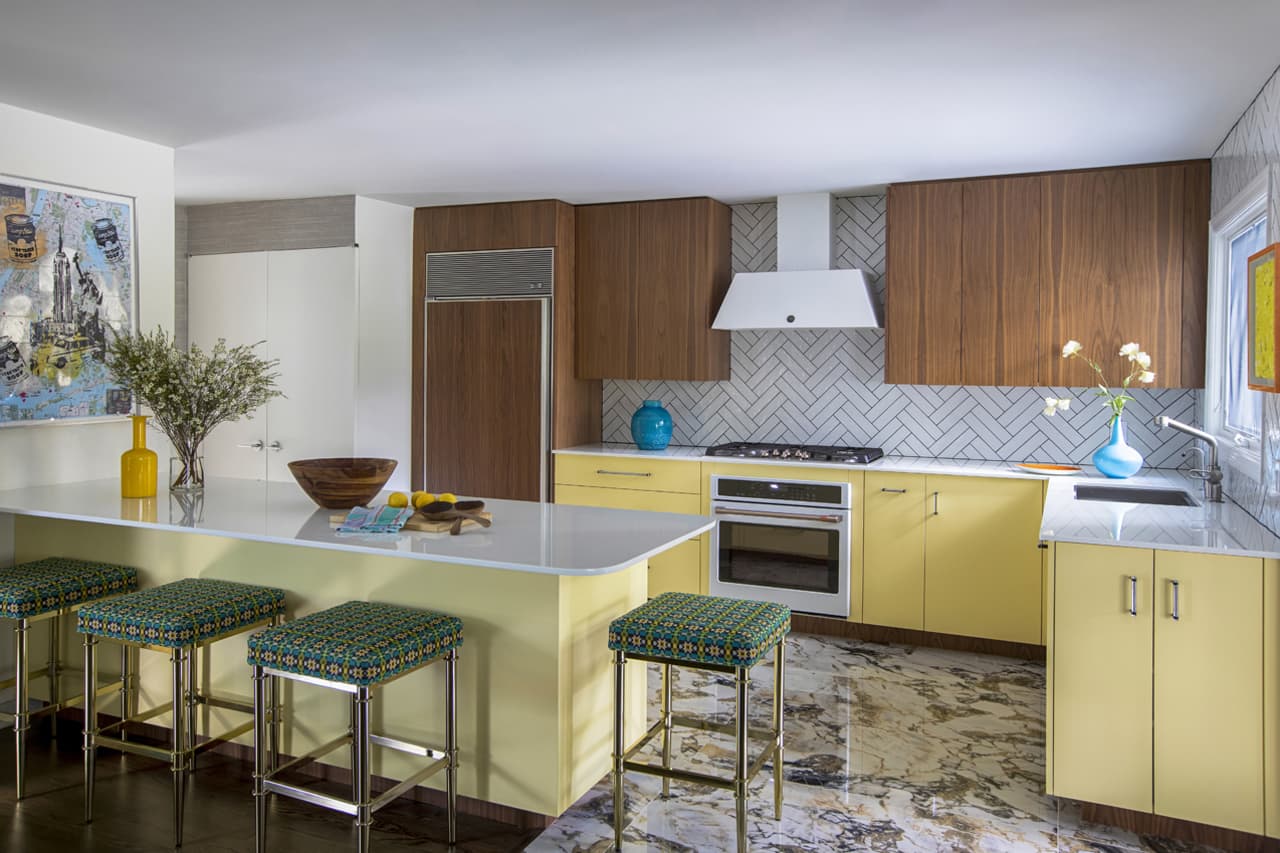What Are ‘Millennial Grey’ Homes and Why Are They Making Millennials Cringe?
To their horror, many millennials have found themselves with safe, way-too-gray decor and TikTok is skewering them. Here, what’s behind this conflicting phenomenon—and tips on escaping a colorless existence.
“OH, LOOK, the kitchen floors are grey now,” I said, juggling boxes as I stepped inside my newly rented apartment. “Nice!”
When I’d first toured the 1940s townhouse in Queens, N.Y., that floor was tiled in ageing checkerboard squares of black and icky-cream. The promise to replace them had thrilled me, but the colour came as a surprise. Then I noticed the kitchen walls were now a seemingly identical grey. A few months later, when my landlord needed to replace the mid-century-pink bathroom floors, I was less enthused. “Oh, look, the bathroom floors are grey now,” I said. “Ugh.”
This decor style—or lack thereof—that I and so many of my millennial peers have ended up with has inspired the mocking phrase millennial grey. “There’s a millennial grey-looking restroom inside the Mexican restaurant,” TikToker @chloeisag sang in February in a viral video with 3.5 million views. The video contrasts the cheery, piñata-filled decor in a restaurant’s seating area with the clean-yet-bleak bathroom in the back. Grey floors. Grey walls. Grey artwork. A fake plant. “It’s giving ‘airport,’” she sings. “It’s giving ‘live, laugh, love.’ It’s giving ‘corporate.’”
As the phrase circulates online, many millennials are realising, to their chagrin, that it all-too-accurately describes their own homes. “So I just heard the phrase ‘millennial gray’ for the first time,” said horrified TikTok user @victoria.thatsit in another video. “Let me show you guys my house. My bathroom: grey. My floor: grey. My counters: grey…Our chairs: some type of grey. Our dog beds: grey. Our walls are grey. This last one really gets me: Our dogs are grey!”
That video has 5.6 million views. “It’s a thing?” one TikTok commenter said of ‘millennial grey.’ “Cause it’s true lol. Everything I own is grey and I’m buying more grey.” Another pinpoints the problem: Grey harmonises effortlessly with…more grey. It “will go with anything…including everything we’ve bought that’s already grey that we bought to go with everything.” A third writes, “I think we all had intentions of adding pops of color but we have commitment problems.”
Boomers and GenXers have ridiculed millennials for decades, but punches from below, from Gen Z and TikTok and the very internet millennials grew up on, are uniquely gutting. And this one particularly hurts because it’s true. I accept no blame for my walls and my floors—as a renter, I don’t make the rules; my (millennial-aged) landlords do. But you know what else is gray? My sofa. My bedding. I chose those. Me. I’m only 29, but as soon as the “millennial gray” snipe surfaced online, I knew the phrase would haunt me for the rest of my decorating years.
How did my generation, known not too long ago for a penchant for pastels, let ourselves slip into a haze of gray? It isn’t necessarily the result of conscious design choices, says Nicko Elliott, 42, co-founder of Civilian architectural and interior design studio in Brooklyn, N.Y. As he explained, house flippers and property managers tend to like inexpensive furnishings in safe, neutral, durable colors, which means many millennial renters and first-time homeowners signed a dotted line on a space that already had gray in its bones: the floors, the cabinets, the counters, the walls. And even when it came time to renovate, many millennials “have been really focused on…having a blank slate for the next person,” said Jen Cook, 39, a Vancouver-based designer and co-founder of Otto Studio, which sells removable, renter-friendly wallpaper.
And the “take it or leave it” gray of choice is often particularly numbing and middle-of-the-road. “Sensible property managers and landlords might say, ‘go for middle grays,’” said Mr. Elliott. “‘If it’s too light it’s going to show dirt. If it’s too dark it’s going to show dirt.’ Everything’s going to push you toward a middle tone.”
Another factor: Impatient millennials want things fast. When it comes to major design purchases like sofas from mass-market outlets, neutral colors like gray are often what’s in stock, no ordering required, said Ksenia Kagner, 37, the other co-founder of Civilian in Brooklyn. “For colored sofas, these days you have to wait 12 to 18 weeks.” For millennials accustomed to two-day shipping, that kind of wait isn’t an option.
Then, as Ms. Cook put it, there’s the fact that “some folks don’t feel comfortable matching [colors]. They’re worried about getting tired of it, so if people are feeling busy and stressed and tapped out, a gray neutral palette feels much more doable.”
The look was once actually a coveted, luxe trend. “In the late ‘90s, when we were coming out of peach-beige-mania, there was more of a high-end design movement about gray and dark woods,” said Mr. Elliott. That trickled down into mass-market decor options. Now, as the design pendulum swings back around to beiges, a gray palette can seem dated, and millennials are realizing to their dismay that they’ve been living life in colorless spaces for the past several years.
Of course, to some, a simple gray palette might seem like a relaxing choice after a stressful day at work. “I think gray just feels very comfortable,” said Nathaniel Dressler, 24, who is enlisted in the U.S. Air Force and recently bought and redecorated a home with mostly gray furnishings in Panama City, Fla. When he moved in, the walls were green and blue and, to him, seemed “really busy.” After he muted the look by painting it gray, “it felt very peaceful and calming.” Like me, he first encountered the phrase “millennial gray” on TikTok and found it amusing (though, by most definitions, he is technically a member of Gen Z). “We had just picked out the colors for our walls and floors and cabinets, and our furniture was already [grey]…Then when I saw it on TikTok, I was like, ‘Oh, this is definitely what they’re talking about.’”
Mr. Dressler said he notices lots of neutral colour choices among his peers, a contrast to the home he grew up in with its yellow and red accent walls. “Every generation wants to move against whatever their parents had as decor,” says Ms. Cook. “For our parents, it was the Tuscan kitchens, for their parents, maybe it was pastels in the ’50s.” At least one TikToker agrees: “As a millennial with a lot of gray walls…I grew up at a time when it was appropriate for everyone to have this faux Tuscan kitchen,” @corndogbicep said in a video. “So what do millennials do with such traumatizing life circumstances? Well, we all decided to have a mental health crisis simultaneously. This is not farmhouse gray; this is asylum gray. We’re living in peace now.”
So what’s on deck for the next generation of home decor enthusiasts? The bolder, the better, said Ms. Cook. “Gen Z is more open…to the idea that your home can be a reflection of your personality, and they’re really going for the big, saturated colors,” she said, noting the difference in shopping habits she’s observed among buyers of her removable wallpaper. “We do have a lot of neutral and softer color palettes—and nobody’s buying it,” she said of Gen Z tastes. “Everyone’s getting the hot pink, the bright blue. It’s kind of wild.”
ME GRAY? NO WAY
Realized you’re living in a dull daze at home? How to break the cycle.
- Think of color as an investment in your happiness. “Our homes impact our mental health so much,” says Ms. Cook. “Ask yourself: Am I inspired by warm, citrusy colors? Am I into pastels? Do I want to go big and bold with some neon touches?”
- If you want to work with the gray you’ve already got:Pull in complementary colors throughout your space. Try sophisticated versions of primary colors, like oxblood, a deep yellow or cobalt blue. “These colors would help bring electricity and contrast to a dull gray space,” Mr. Elliott said.
- Finally, if you’re dead-set on gray walls, at least choose the right one. Wickham Gray by Benjamin Moore is a go-to gray paint that Ms. Kagner and Mr. Elliott have used in multiple projects. “It’s beautiful,” he said. “There’s a little bit of green in it, a little bit of blue in it, and there’s a richness that will change over time. It absorbs colors, it reflects light throughout the day, and it has different moods.”
 Copyright 2020, Dow Jones & Company, Inc. All Rights Reserved Worldwide. LEARN MORE
Copyright 2020, Dow Jones & Company, Inc. All Rights Reserved Worldwide. LEARN MORE
This stylish family home combines a classic palette and finishes with a flexible floorplan
Just 55 minutes from Sydney, make this your creative getaway located in the majestic Hawkesbury region.
The personal wardrobe of the late fashion designer Vivienne Westwood, who is credited for introducing punk to fashion and further developing the style, is headed to auction in June.
Christie’s will hold the live sale in London on June 25, while some of the pieces will be available in an online auction from June 14-28, according to a news release from the auction house on Monday.
Andreas Kronthaler, Westwood’s husband and the creative director for her eponymous fashion company, selected the clothing, jewellery, and accessories for the sale, and the auction will benefit charitable organisations The Vivienne Foundation, Amnesty International, and Médecins Sans Frontières.
The more than 200 lots span four decades of Westwood’s fashion, dating to Autumn/Winter 1983-84, which was one of Westwood’s earliest collections. Titled “Witches,” the collection was inspired by witchcraft as well as Keith Haring’s “graphic code of magic symbols,” and the earliest piece being offered from it is a two-piece ensemble made of navy blue serge, according to the release.
“Vivienne Westwood’s sense of activism, art and style is embedded in each and every piece that she created,” said Adrian Hume-Sayer, the head of sale and director of Private & Iconic Collections at Christie’s.
A corset gown of taupe silk taffeta from “Dressed to Scale,” Autumn/Winter 1998-99, will also be included in the sale. The collection “referenced the fashions that were documented by the 18th century satirist James Gillray and were intended to attract as well as provoke thought and debate,” according to Christie’s.
Additionally, a dress with a blue and white striped blouse and a printed propaganda modesty panel and apron is a part of the wardrobe collection. The dress was a part of “Propaganda,” Autumn/Winter 2005-06, Westwood’s “most overtly political show” at the time. It referenced both her punk era and Aldous Huxley’s essay “Propaganda in a Democratic Society,” according to Christie’s.
The wardrobe collection will be publicly exhibited at Christie’s London from June 14-24.
“The pre-sale exhibition and auctions at Christie’s will celebrate her extraordinary vision with a selection of looks that mark significant moments not only in her career, but also in her personal life,” Hume-Sayer said. “This will be a unique opportunity for audiences to encounter both the public and the private world of the great Dame Vivienne Westwood and to raise funds for the causes in which she so ardently believed.”
Westwood died in December 2022 in London at the age of 81.
This stylish family home combines a classic palette and finishes with a flexible floorplan
Just 55 minutes from Sydney, make this your creative getaway located in the majestic Hawkesbury region.






















